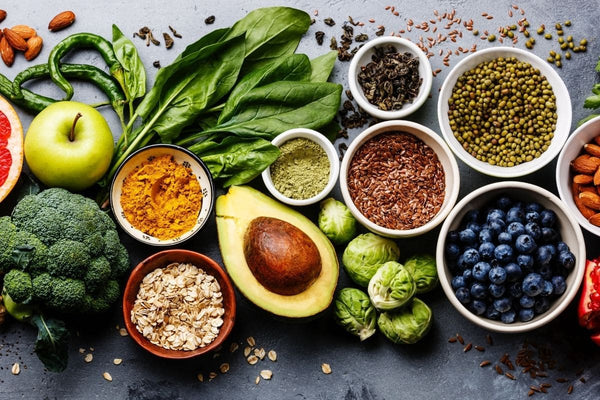For many, once you start on the marathon ‘train’, you don’t stop! It might be the runner’s ‘high’, the dumbfounded looks on the faces of those you pass by, or the respect your friends give you for voluntarily putting yourself through what they see as ‘a whole lot of suffering’. More likely, you found your way to a healthier lifestyle that you want to keep up, and long distance running is one way of doing that.
You see, you can’t just run a marathon. Doing so without any preparation is likely to result in one thing and one thing only - hurting yourself. Running a marathon normally takes months of preparation for someone who maintains a decent level of fitness, so for those who are less inclined to exercise regularly, training for a marathon is likely to take a year of prep. That’s right, a whole year.
That means your friend that went from doing no exercise to running a marathon learnt a whole lot about exercise, fitness, training and the body in the time leading up to the dreaded race day. They then had to put most (if not all) of that learning into adjusting their lifestyle in order to be able to train their body to be able to run a marathon.
HOW FAR IS A MARATHON?
A marathon is 26.2 miles, that’s 55,374 paces of an average man, or 62,926 of an average woman! That’s 26 minutes and 12 seconds of driving at 60 miles per hour - so we can all agree that is a substantial distance! I think, if we are being honest with ourselves, most of us could not get up and run that distance tomorrow!
HOW LONG DOES IT TAKE TO TRAIN FOR A MARATHON?
Training for a marathon is a mammoth task, even for those regularly exercising. If you aren’t already running 10k on a regular basis, chances are you had best set aside a year to condition your body to be able to handle the stress that a marathon will put on it.
For those already engaged in regular physical exercise of a cardiovascular nature, the preparation time could be reduced to around 6 months, and there are people out there who regularly run long distances, so these ‘runner’ types may be able to tailor their routine toward gearing up for a marathon within a few months.
The runner types have already tailored their lifestyle to accommodate their running, and so these guys will have the ‘easiest’ time adjusting. That said, there will still be some adjustment - as they up the distance for their training runs they will need to increase their rest, and potentially their caloric intake as well.
CHOOSING A SUITABLE MARATHON TO TRAIN FOR
So you’ve caught the marathon bug - where do you start? Assessing your running experience, current state of your health, and level of fitness is a good idea. It is essential that your marathon training plans are specific to you to avoid injury and to maximise progress. If you overestimate your ability, the result could be an injury early in the training progress, which puts more pressure on the later stages of training - both of which could be enough to put you off taking part in the marathon altogether. If in doubt, it’s going to be safest to start from scratch!
Beginners should aim for some of the smaller runs before trying to take on a full marathon - aim for a 5k run to begin with, then look at working up to a 10k, before moving on to a half-marathon and then - finally - the whole hog, ‘full fat’ marathon.
HOW TO TRAIN FOR A MARATHON
So now, you should have established your fitness level and the first goal to aim for, giving you an idea of the trajectory that needs to be taken - i.e. how hard you need to push yourself, and in what time frame. Now it’s time to put pen to paper and commit to those targets so you know how you should be progressing in the months to come!
SETTING A TRAINING PLAN
WHY DO YOU NEED A TRAINING PLAN?
A training plan is essential for a couple of big reasons - the biggest of which is to avoid injury! An injury at any time in the training period prior to running a marathon could mean an end to your marathon plans, though it depends on the nature of the injury. Planning is so important when it comes to adding mileage on your runs as the weeks progress because adding too much too quickly is likely to lead to injury - even if you feel like you could do more miles, you should avoid doing so if it is not in the plan!
Choose a plan designed for your experience level as this keeps the milestones as achievable goals. For new runners, hitting some of those milestones may seem too far away, so if you’re looking at a plan for an under 4 hour marathon time it might put you off! First timers should just worry about getting around the course, and should choose a plan appropriately.
The great thing about following a plan is that you can adjust the plan depending on how well it’s working for you. As previously mentioned, I’m not talking about adding unplanned miles to a run or over the week here. The focus should be adjusting rest periods, food intake or diet to ensure the body has everything it needs to recover - if you aren’t recovering well enough then take an extra day to rest if you need it - the price of injury is too high.
HOW DO YOU SET A TRAINING PLAN?
Setting up a training schedule requires attention to four areas: base mileage, long runs, speed workouts, and rest and recovery.
Base mileage - this is your total distance run over a week. You should aim to run three to five times per week, increasing the base mileage every week.
Long runs - this is your ‘ceiling push’ exercise, these are your mini marathons you will run every 7 - 10 days to condition your body to run longer distances.
Speed training - Interval training and/or tempo runs help to improve cardio capacity, and improve the speed at which the body deals with lactic acid, improving muscular endurance.
Rest - this is when your body is repairing, and is necessary to avoid injury.
With these tenets, we can follow a plan that works for your experience level and goals! Don’t forget that you are likely to need some new shoes, accessories and possibly clothes for running, so make sure to get the gear you need early so you can become accustomed to it by race day!
SCHEDULE
Set up your schedule to include 3 to 5 runs in the week (3 for beginners, 5 for regular runners) remembering that one of those runs will be your ‘long run’ for the week. These runs should be run at a relaxed pace, with a view to getting your weekly mileage up to 50 miles by race week. Keep in mind that you shouldn’t increase your base mileage by more than 10% week on week - doing so will risk injury.
Long runs should be done every 7 to 10 days, increasing each one by a mile or two, scaling back every 3 runs or so just to avoid over taxing the body, risking injury. Don’t push for speed here; allow the body to adjust to the longer distances by taking it easy. The aim is to be hitting 20 miles on a run before race week, relying on training and adrenaline to get through those last 6.2 miles on the day.
Speed work can consist of two main types of training: interval training and tempo runs. Interval training uses bursts of high intensity exercise alternated with low intensity exercise as a means of increasing the maximum cardio capacity. This can be done by a short period of running or (high intensity exercise) - time or distance - this is known as the ‘work set’. This is followed by walking (low intensity exercise) until you are recovered and ready to go again, and this is known as the ‘rest set’. Starting with a warm up into a rest set, you then alternate work sets and rest sets until you finish on a warm down.
Don’t be too ambitious; interval training works because it maintains a minimum effort level throughout the exercise (with bursts of more intense effort required) which means that even though we call it a ‘rest set’, it can’t be considered rest. Interval training is considered difficult because of this, but similar results can be achieved in a fifth of the time compared with traditional aerobic conditioning (1).
Tempo runs are short runs (up to 10 miles) that you aim to do within a specific time, running at a sustainable but taxing speed. This is training endurance for body and mind, maintaining effort over a longer period of time.
Finally, the all important rest days! Rest days might mean no exercise, but spending some time on rest days doing either light exercise or stretching can aid recovery. Forms of light exercise you could do on rest days include cross training, yoga, palates, and walking, to name a few!
These four areas will naturally arrange themselves in a fashion resembling the following: rest day, speed training day, rest day, speed training day, rest day, rest day, long run day. Make sure to change between interval training and tempo runs for the speed training days. Also, there is flexibility depending on where you need the most recovery - you may find that you need two days rest after the ‘long run’ day, so don’t be afraid to switch things around as necessary, just be sure to allow for rest days between training days.
STRENGTH TRAINING FOR A MARATHON
Strength training for marathon runners helps to get muscles used to dealing with increased stress (2). It should be done in conjunction with a running plan, and should be designed to build a strong foundation with a view to increasing the body’s ability to do high intensity exercise for longer periods. Remember to taper off the training before race day to allow for good recovery!
EATING RIGHT
It doesn’t matter how well rested you are if your body can’t repair itself when you do rest!
In order for your body to recover properly, you need to make sure you are eating enough calories, and that those calories are ‘good calories’. A food that is nutrient dense could be considered as having ‘good calories’, whereas something like alcohol is often referred to as having ‘empty calories’, which means it has no nutrient value and doesn't supply good energy. No nutrient value means no building blocks for your body to use for repair!
So, without completely re-writing your diet, you can follow a few rules to make some subtle adjustments to your diet to improve it for the energy you need for running, as well as the recovery period afterwards.
Slow burning carbohydrates - these are nutrient dense foods, with energy that is released slowly - perfect to eat before for a long run. Choices include brown bread, oats and quinoa to broccoli and dark chocolate.
Protein - necessary for muscle recovery, found in meat products and nuts, beans, legumes, seeds, and some veggies like broccoli, Brussel sprouts, asparagus, spinach and sweet potatoes.
Water - necessary for every process in the body, and good hydration helps speed up recovery and reduce soreness by carrying toxins out of the body.

Bananas are a great pre-run snack, not only because they digest easily, but because they contain vitamin B6 which helps convert carbohydrates into energy. Bananas also contain potassium, which can help reduce stress and anxiety, as well as contributing to our ability to contract muscles and regulate our heartbeat (3).
SPECIAL FOCUS ON MENTAL HEALTH
Running 26 miles is going to be a psychological challenge, as well as a physical one - doing some mental preparation will help you make it through. This can include running through the marathon in your head, visualising crossing the finish line, and preparing your words of encouragement to yourself. When running, make sure to put into practice focusing on things you can control, and holding a comfortable running rhythm.
QUITTING BAD HABITS
You may be ruining your chances before you start your training if you have a few bad habits that impact your physical and mental health.
- A lack of good sleep will impact your recovery, affect energy levels which could lead to putting off training, as well as reducing your ability to deal with stress during the day.
- Smoking negatively impacts your cardiovascular system, making aerobic exercise more challenging, and increases risk of cardiovascular disease. Not a good combination with a marathon training program, or the stress of running a marathon.
- Drinking alcohol has been shown to reduce skeletal muscle uptake of glucose and amino acids (4), as well as impairing energy supply and the metabolic process during exercise.
Reducing or eliminating these habits is likely to see you struggle less with exercise in general, as well as helping you cross that finish line. Exercise should help you get to sleep, so try to keep a regular bedtime and get up at the same time every day to stay in your circadian rhythm (5).
Excessive drinkers should think about making an effort to reduce their alcohol consumption, and this might be drinking smaller measures, weaker alcoholic drinks, and alternating drinks between alcoholic and non-alcoholic beverages.
Whatever your bad habit, consider spending more time out in nature - there is building evidence that nature based interventions help us deal with stress, can reduce cravings, and improve our well-being!
RECOVERING AFTER A MARATHON
After the race, recovery starts. Keep walking for another 10 to fifteen minutes to allow your body to re-adjust, eat a small snack containing lots of carbs and a little protein to begin to feed the muscles. Then it’s time for some cold therapy to aid recovery and reduce soreness. Then some stretching, foam rolling can help a couple of hours after finishing (6).
From there, you could book in for a massage the following day, but otherwise plan to eat, sleep and enjoy yourself! Only consider light exercise for the week that follows, slowly increasing the amount of exercise week on week, before getting back to normal approximately a month after the race.
Many athletes are now looking to add CBD Oils and
CBD Gummies into their post training recovery. Studies have found that
CBD Oils can help to reduce inflammation and help to relax muscles which can be key to speeding up recovery times. CBD has also been found to aid in getting a better night's sleep and may help to
fight insomnia!
So if you are training for a marathon, adding CBD Oils or CBD Gummies into your daily routine could help your overall physical performance.
HOW TO TRAIN FOR A MARATHON - ESSENTIAL LIFESTYLE TIPS - CONCLUSION
If you want to join the ranks of elite human beings that can run 26.2 miles in one sitting, then this guide should help you on your journey to the starting line. It’s a serious undertaking and should be treated as such, but the better your preparation, the easier you will find it on the day. Though I doubt the word ‘easy’ will be on your lips when you cross the finish line.
Happy running!
REFERENCES
(1) What Are the Benefits of Interval Training
(2) A 16-week strength training plan for marathon runners
(3) The Role of Potassium
(4) Interaction between alcohol and exercise: physiological and haematological implications
(5) Circadian Rhythm: What it is, what shapes it, and why it's fundamental to getting quality sleep
(6) 4 Ways to Recover after a Marathon
ABOUT THE AUTHOR
Written by Dan Overgage
Dan Overgage – is a former smoker of 10 years until he became a client of SMOKO E-Cigarettes. Dan started working with SMOKO 5 years ago after successfully quitting using our e-cigarettes and works across our Customer Service and heads up our content creation and research with a strong focus on all things quitting smoking. During his tenure with SMOKO, Dan has written countless blogs and consults with countless clients every day to help them to stay smoke-free.

















